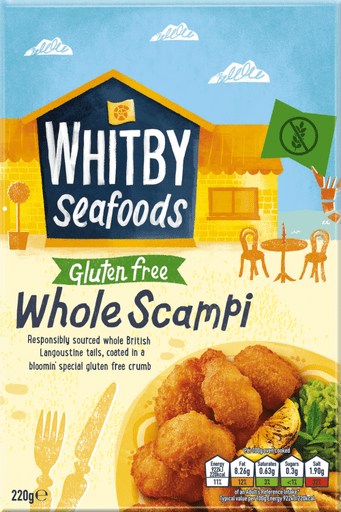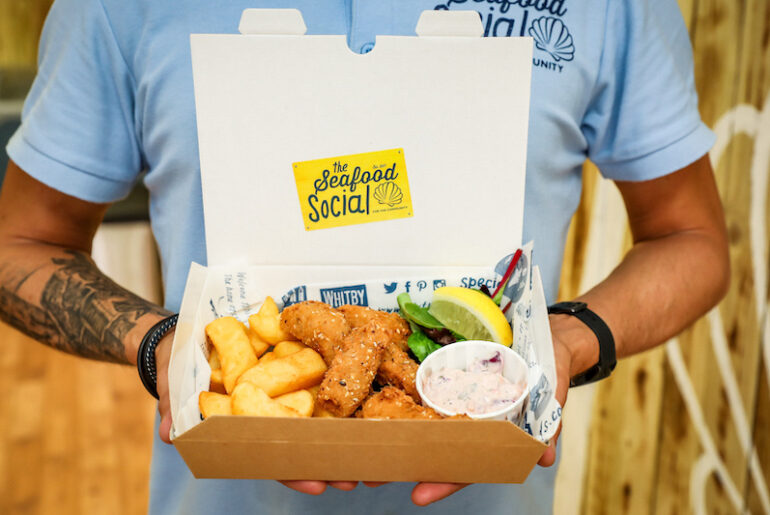Following a period of unprecedented gains, driven by at-home demand during the Covid-19 pandemic (SARS-CoV-2) lockdown period, frozen seafood volumes now seem to be leveling out in the United Kingdom. However, retailers are continuing to ring up greater sales in terms of value.
“Frozen fish purchases have increased by £141.2 million since 2019, which illustrates the growing demand,” said Rupert Ashby, chief executive of the British Frozen Food Federation (BFFF). “This also presents an opportunity for more frozen food producers to enter the growing market and for greater innovation in the frozen seafood market to attract new customers who might have not previously considered frozen options.”
As the cost of living crisis continues to hit UK consumers hard, increasing numbers of consumers have turned to more cost-effective frozen seafood options. In fact, according to Kantar market data, the value of frozen fish sales grew by 4.6% in the last quarter of 2022.
“The past few years have been challenging for the entire food industry,” said Ashby. “Our members have faced rocketing energy and ingredients prices whilst navigating the challenges posed by HGV driver shortages, among other issues. The rising cost of production has been impossible to contain and frozen food producers have ultimately had to pass some of the cost to consumers, which has contributed to the current record high rates of food inflation.”

UK-based companies, such as Whitby Seafood, which has a 100% British product portfolio, have been shielded from some of the issues in supply chains faced by the wider frozen food market that relies on imports. However, the fuel crisis brought on by Russia’s military invasion of Ukraine has made captains of fishing vessels more reluctant to go further out to sea, which has resulted in lower catches and constant pressure to meet demand.
“Brexit, energy costs – especially in the breading sector where there is a high demand on fryers and then freezers, both of which require large consumption of energy – and the cost of living, as we are a real life wage employer that ensures all our staff are fairly paid, has affected the price of frozen seafood within our company,” explained Sophie Pogson, senior marketing manager at Whitby Seafoods. “And more recently the Nationality and Borders Act affecting the crew and wages on board ships has had additional impact.”
“We are working really hard to mitigate as many of these costs as much as possible by looking at energy usage, developing tailing machines – fewer crew, more catch, better pay and conditions, working practices and efficiencies at sea – chairing the Project UK group to make scampi MSC, and adding value to shell waste,” added Pogson. “More demand equates to a higher price, but as with everything in the UK fishing sector, changes are slow to be accepted.”
Popular Products
Thanks to innovations in the sector and a shift in consumer eating habits, foodservice operators have expanded use of frozen seafood products. This not only enables the preparation of dishes in advance, but reduces food waste as well.
“Sandwiches and wraps are perfect for a quick turnaround or grab-and-go option, and a fish finger sandwich hits the mark,” said Joel Carr, development chef at Grimsby, England-headquartered Young’s Foodservice. “Our MSC certified and sustainably sourced Alaska Pollock Fish Fingers are coated in a crispy golden breadcrumb, and when served between two slices of fresh crusty bread, with iceberg lettuce, tomatoes, and a dollop of mayonnaise, it’s the ultimate sandwich.”

In the retail market, Whitby Seafoods branded frozen scampi products can be found in Sainbury’s Farm Foods, Tesco and Morrisons stores. The company’s whole Langoustine tails, responsibly sourced from waters around the British Isles, are wrapped in gluten-free crumbs, tapping into consumer demand for sustainable and free-from seafood products.
Latest Trends
According to the MSC UK and Ireland Market Report 2022, nine out of 10 consumers are worried about the state of the world’s oceans, with 77% believing that in order to help protect marine environments, consumers should eat fish and seafood harvested only from sustainable sources.
“For environmentally conscious consumers and businesses, frozen seafood is fast becoming a go-to staple,” said Carr. “Not only does frozen food last longer, thus reducing food waste, but it also helps cut carbon emissions. With a longer shelf life, frozen products can be bought in bulk, reducing the number of deliveries required. Flexibility in catering is key with staff shortages and rising costs affecting operators, and to tempt customers caterers should look to inject some simple inspiration into their fish dishes.”
Carr added: “It’s more important than ever that operators buy sustainably sourced fish and Young’s Foodservice Fish for Life program is about caring for our people, planet. As specialists in seafood for over 200 years, we ensure that responsible sourcing is at the heart of everything we do so that our customers can deliver the best quality on their menus.”

Mintel’s UK Fish and Shellfish Market Report 2022 highlights consumers’ favorable perception of seafood as healthier than red meat, which is an area that manufacturers will likely be exploring and promoting further over the coming months.
“Whilst an increased consumer focus on sustainability poses a threat to the market, openness to vegan/plant-based alternatives from established brands offers a way for them to keep people engaged,” said Alice Pilkington, a food and drink analyst at Mintel.
With a current value of £7.25 billion, the frozen food market in Britain is popular among the retail and foodservice sectors and this shows no sign of abating, according to the BFFF.
“Demand for frozen seafood will continue to grow in line with wider market growth,” predicted Ashby. “We fully expect this trend to continue into the spring and summer months as the weather gets warmer, meaning that summer recipe books and barbecues will be brought out of hibernation.”





